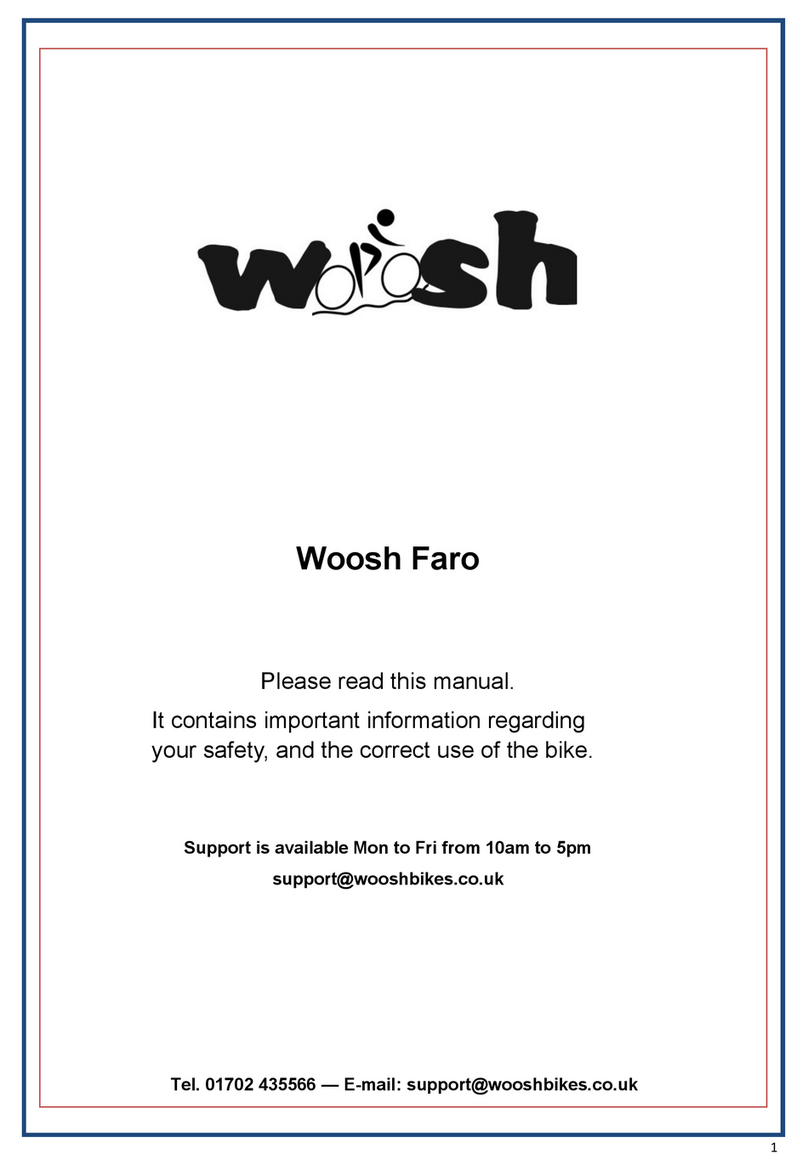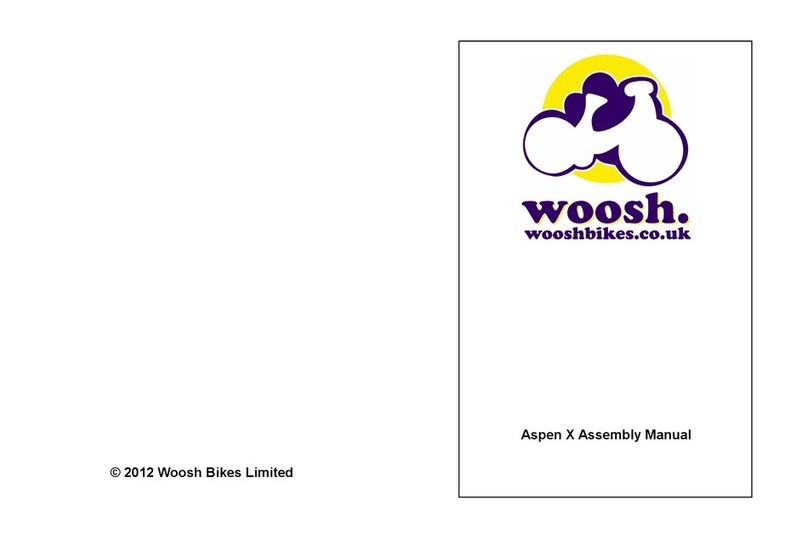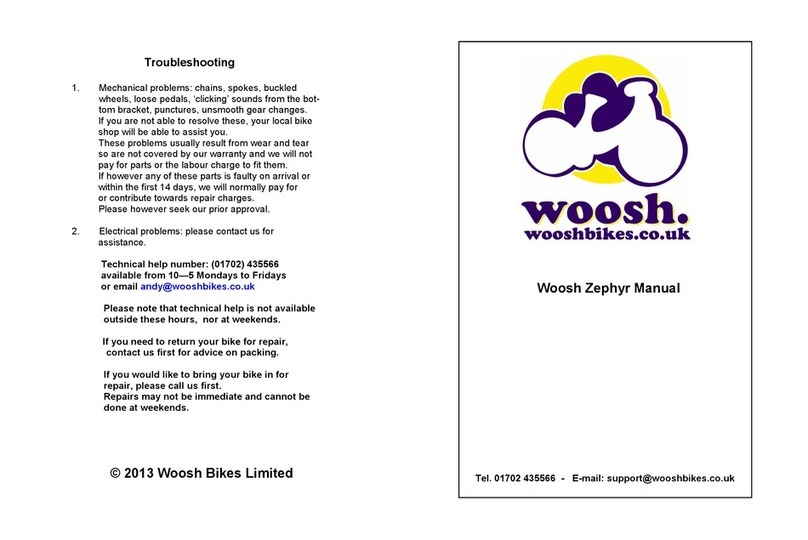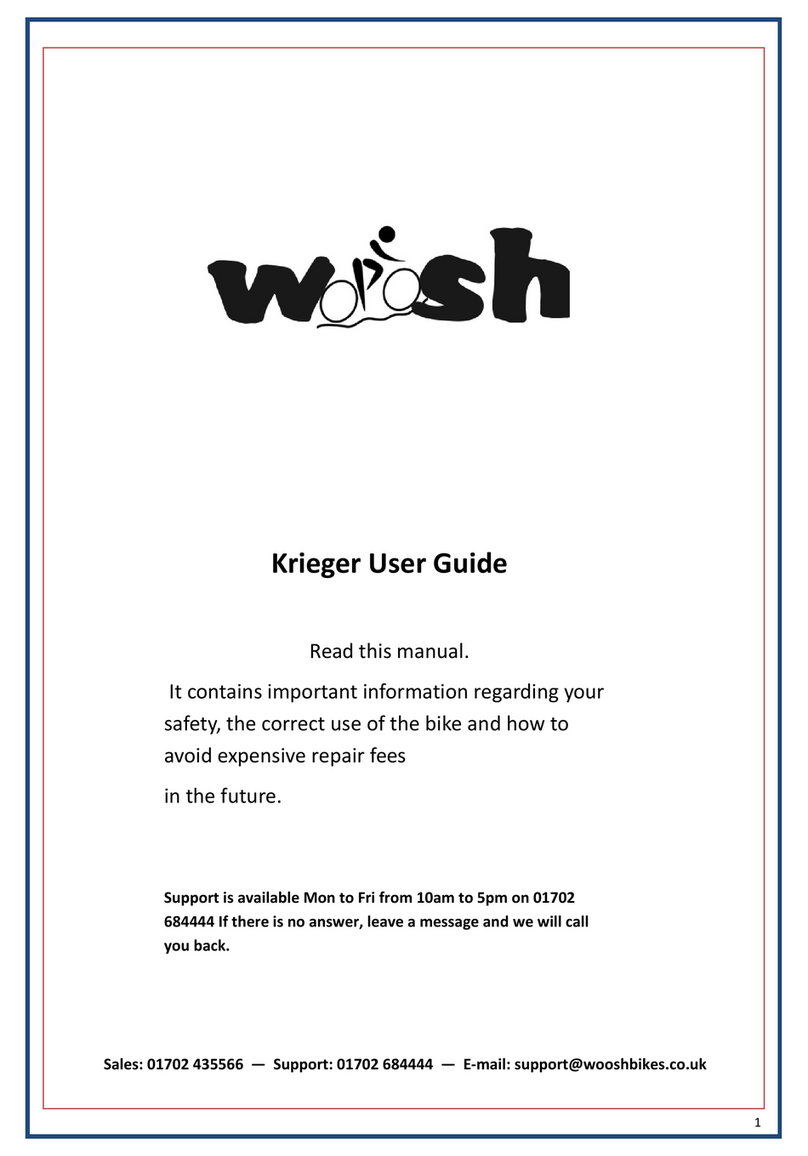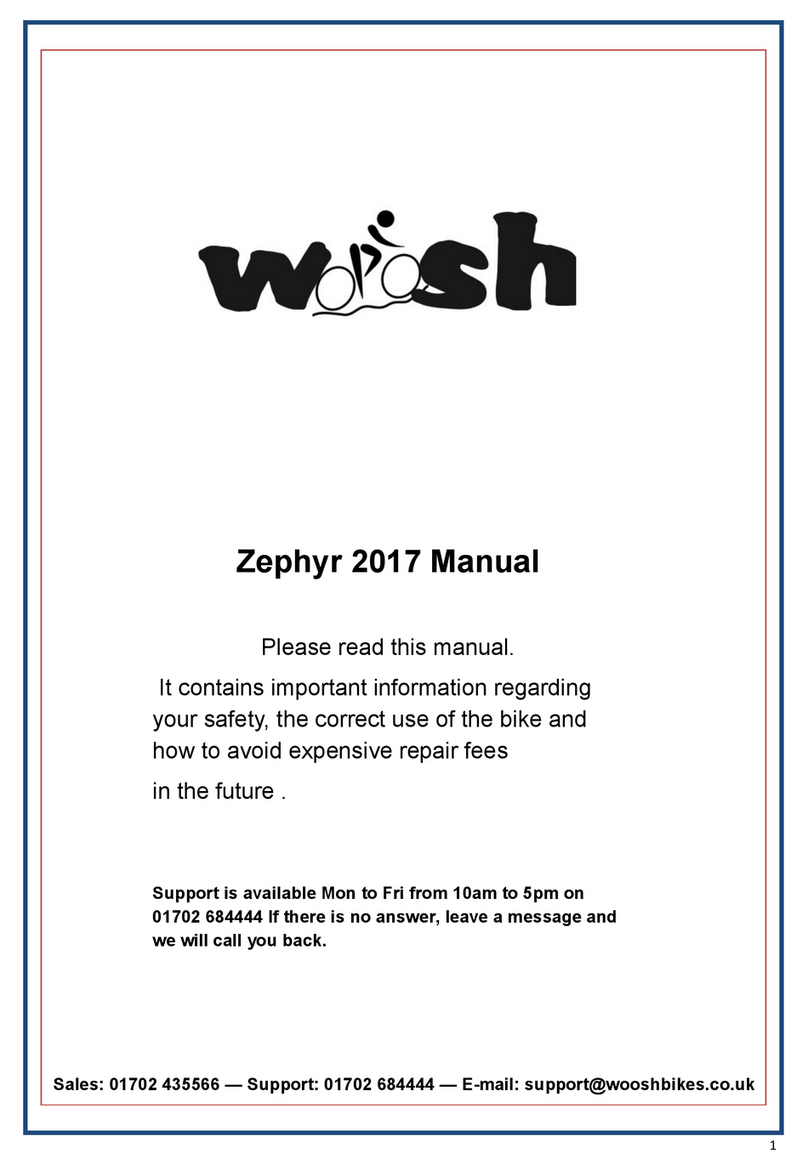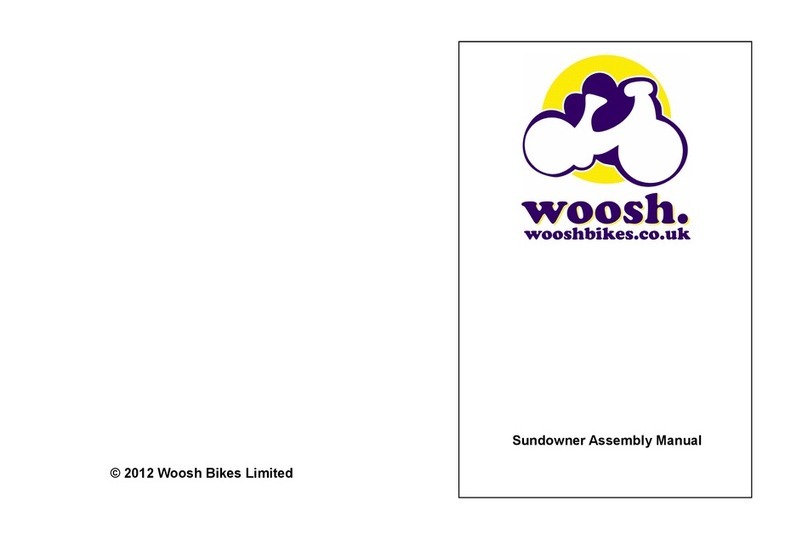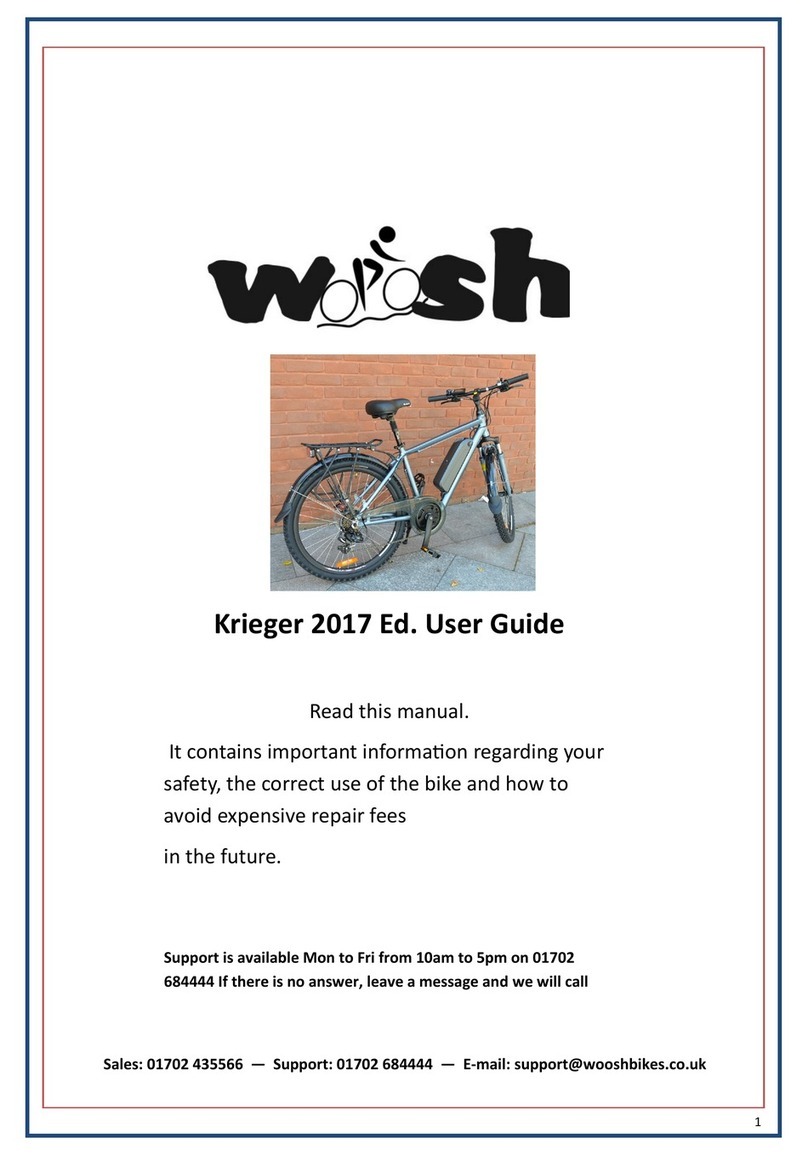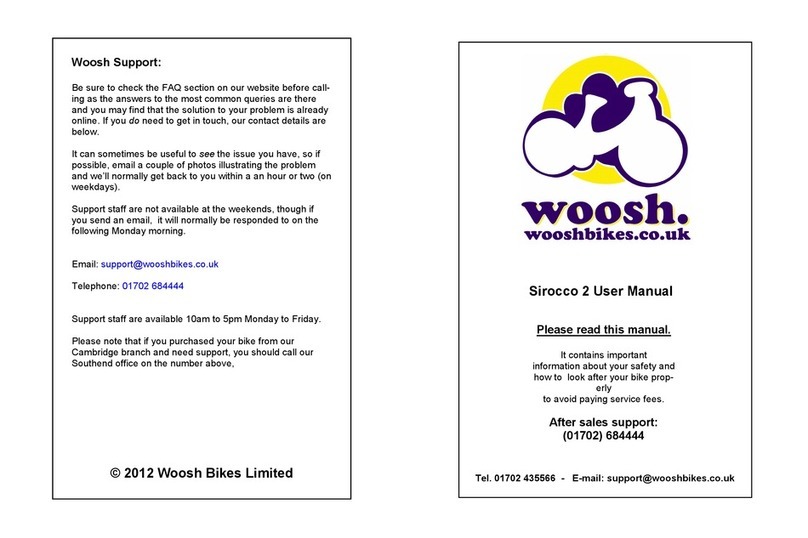5
The Woosh Electric Bike 12 month Warranty
This warranty covers:
Manufacturing defects causing electrical failure within the first year
Manufacturing defects causing major mechanical failure (frame and handlebars) within the first year
Manufacturing defects causing minor mechanical failure (pedals, spokes etc.) within the first 28 days.
Damage and cosmetic damage (deep gouges, chips, dents and scratches) caused through poor transit to
you.
This warranty does not cover:
Accidental damage caused through collision with an object or person or a s a result of dropping the bike or
the bike falling over.
Negligence: damage caused as a result of failure to carry out initial and regular safety checks, or failure to
maintain the bike or its parts in accordance with the manual, the recommended rider weight being ex-
ceeded, or allowing weights heavier than 5Kgs being placed on the rear rack, of allowing people to ride on
the rear rack, excessive or constant use of the throttle, riding under the influence of drink or drugs, riding
in dusty/sandy environments,
riding on very poorly maintained roads, off road, through deep puddles or fords, in snow, or with a trailer,
riding carelessly or stunt riding.
Consumable parts after the first 28 days: these include tyres, inner tubes, batteries for lights if applicable,
brake pads, bottom brackets, cranks, spokes and pedals.
Minor faults on arrival: loose fixings (nuts, bolts, screws,), loose spokes, loose cables deemed resolvable
with minimal intervention,
Minor cosmetic damage - hairline scratches or barely visible chips, marks or dents.
The warranty period applies to riding within the UK only, is strictly for 12 months and cannot be extended
under any circumstances, even if you have ridden the bike very little.
This warranty expressly excludes consequential loss, injury or hardship as a result of electrical or
mechanical breakdown, accident or collision or as the result of a faulty part Our liability is limited
strictly to repair or replacement of the bike or of the part
This warranty is transferable to a second hand purchaser but our Ts and Cs will apply and their weight
should not exceed the limits for the bike.
